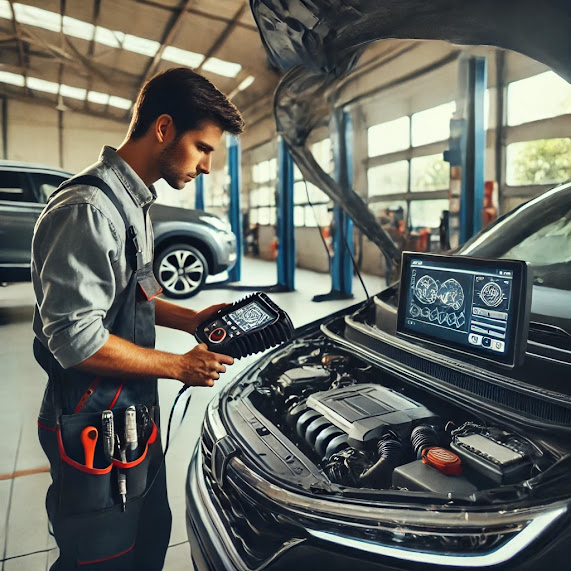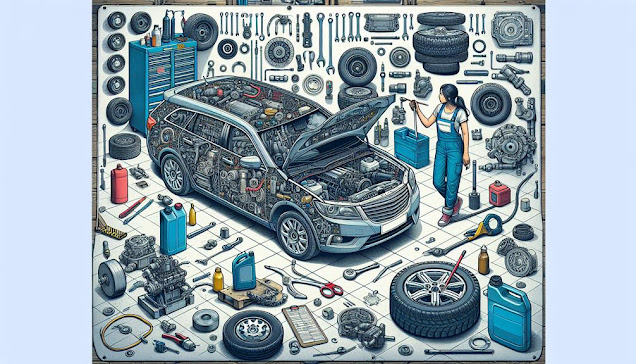What Happens During a Vehicle Inspection: Important Steps to Know
When preparing for a vehicle inspection, it’s important to understand that the process is thorough, covering both external and internal aspects of the vehicle. This detailed evaluation checks for issues that might affect the vehicle's performance, safety, and overall condition. Technicians will examine everything from the bodywork and lights to the engine, fluids, and exhaust system. These steps are essential to ensure that the vehicle remains safe on the road and performs optimally. But what happens during these detailed inspections, and why are they so important?
Exterior and Interior Inspections
The inspection begins with a comprehensive examination of the vehicle's exterior. The bodywork is scrutinized for any signs of damage, including dents, scratches, and rust. Structural integrity is vital for a vehicle's safety, and even small issues, like rust or cracks, can compromise the vehicle over time. Paintwork is also checked, not only for aesthetic purposes but also to ensure that it continues to protect the vehicle from environmental elements that can cause wear and corrosion.
Next, the lights are inspected. This includes headlights, taillights, turn signals, and brake lights. All must be functioning correctly to ensure that the driver remains visible to others on the road, especially in low-light conditions or during adverse weather. Mirrors and windows are also checked for visibility, making sure they are free of cracks and function properly, providing a clear view for the driver.
Tires are a critical component of vehicle safety, and inspectors will evaluate their tread depth, wear patterns, and inflation levels. Worn or improperly inflated tires can reduce traction, increase stopping distances, and lead to unsafe driving conditions. Proper tire maintenance is crucial for ensuring that the vehicle grips the road well and remains stable during operation.
On the inside, the inspection covers the vehicle’s controls and instrumentation. Dashboard indicators, which alert the driver to potential issues like low oil or engine overheating, are checked to ensure they are working properly. The inspector will also verify that the seatbelts and airbags are functional, as these are critical to passenger safety in the event of a collision.
Other interior elements, like the upholstery, steering system, and pedals, are assessed for comfort and safety. A functional heating, ventilation, and air conditioning (HVAC) system is also important, not only for passenger comfort but also for preventing issues like windshield fogging, which can obstruct visibility.
Under the Hood and Beneath the Vehicle
Moving to the more technical aspects of the inspection, the under-the-hood examination focuses on the vehicle’s engine and other critical systems. The engine is thoroughly checked for any signs of wear, leaks, or performance issues. Fluid levels, including engine oil, coolant, brake fluid, transmission fluid, and power steering fluid, are monitored to ensure they are at appropriate levels and free from contamination. Low or dirty fluids can indicate a problem with the system and lead to significant mechanical failures if not addressed in time.
The battery is another crucial component. It is tested for voltage to ensure it is holding a proper charge, and the connections are inspected for corrosion. The alternator, which charges the battery, and the serpentine belt, which powers various engine components, are also checked for wear and proper operation. Any issues with these components could lead to a breakdown.
Air filters are also inspected under the hood, as they play a critical role in maintaining engine efficiency by filtering out dust and debris from the air that enters the engine. A clogged air filter can reduce engine performance and fuel efficiency.
Beneath the vehicle, the inspection continues with a focus on the exhaust system, suspension, and chassis. The exhaust system is checked for signs of rust, holes, or loose connections that could lead to dangerous leaks or reduced performance. The suspension system, which includes shocks, struts, and bushings, is evaluated for wear and tear. A faulty suspension can result in poor vehicle handling and an uncomfortable ride.
The chassis, which forms the structural backbone of the vehicle, undergoes a thorough check for any signs of corrosion or structural damage. Inspecting the chassis is essential to ensure that the vehicle maintains its structural integrity, which is vital for safety, especially in the event of a collision.
In conclusion, a vehicle inspection is an all-encompassing process designed to maintain the safety, performance, and reliability of a vehicle. The exterior inspection ensures that the bodywork, lights, mirrors, and tires are in good condition, while the interior evaluation checks the dashboard indicators, seatbelts, airbags, and HVAC system for functionality. Under the hood, inspectors focus on the engine, fluids, battery, and other vital components, ensuring that everything is operating as it should. Beneath the vehicle, the exhaust, suspension, and chassis are inspected to guarantee the structural integrity of the car.
This meticulous approach ensures that any potential issues are identified early, preventing breakdowns, costly repairs, and unsafe driving conditions. Regular inspections not only keep the vehicle roadworthy but also contribute to its longevity and optimal performance, providing peace of mind for the driver and passengers alike. These inspections are critical for upholding safety standards and ensuring the vehicle remains in peak condition, ready to face the demands of the road.



Comments
Post a Comment